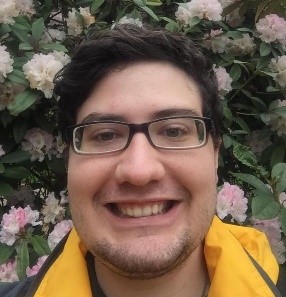Graduate Researcher return to map return to student search

Hometown:
Boise,
ID
US
(Ada County)
School:
Boise State University
Graduate student
Ecology, Evolution, and Behavior
Funded by EPSCoR Award:
GEM3 | OIA-1757324
Research Location(s):
COUNTIES:
LEGISLATIVE DISTRICT(S):
Research Statement:
John M. A. Wojahn (aka Michael), a PhD student in Ecology, Evolution, and Behavior with Global Change Emphasis at Boise State University, recently led efforts to develop a new tool that allows users to formulate hypotheses about genes to phenotypes (G2P) interactions in their preferred study system through an automated, efficient, and unbiased literature review approach. He is a research assistant in the Buerki lab where he is working on developing a neural network AI to infer the phenotypes of sagebrush seedlings, and also working on extending G2PMineR's analytical capacity for a future 2.0 release. Michael is also continuing his work within his doctoral program, studying the evolutionary history and genomics of the genus Pandanus, which is a genus of tropical monocotyledonous trees in the Old World tropics. His future plans include studying the evolutionary history and genomics of plants in service of designing better conservation strategies, as well as developing free and open-source software for biodiversity research. Ultimately, after graduating from the EEB doctoral program and finishing a postdoc, Wojahn hopes to be a principal investigator at either a botanical garden, a museum, a university, or a non-profit organization.
Research Impact:
The G2PMineR project goal was to produce a tool (the G2PMineR R-package) to address a gap in the conceptual framework linking G2P for non-model organisms, as most non-model organisms do not yet have genomic resources readily available. Researchers often have to perform literature reviews to understand G2P linkages by developing a list of likely gene candidates, hinging upon other studies already conducted in closely related systems. This can be a tedious process and also has the potential to introduce bias into the research.
